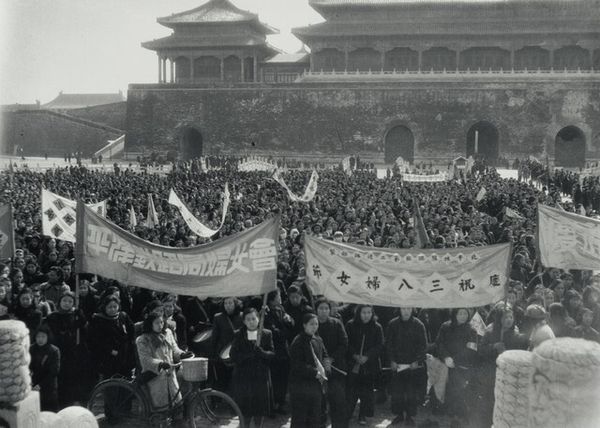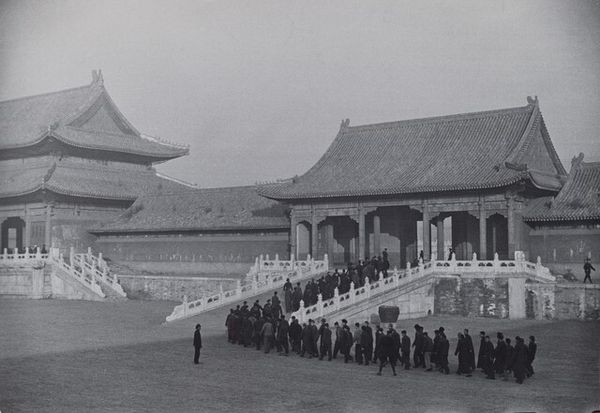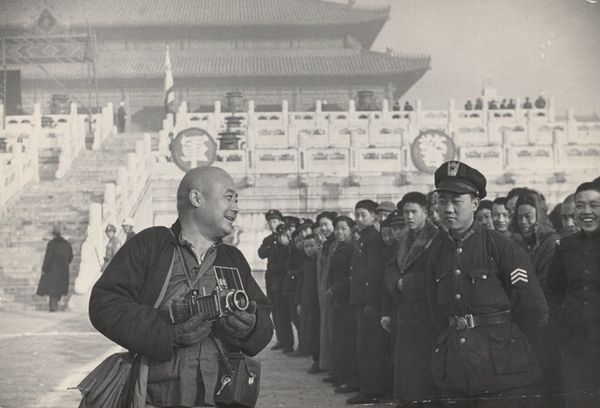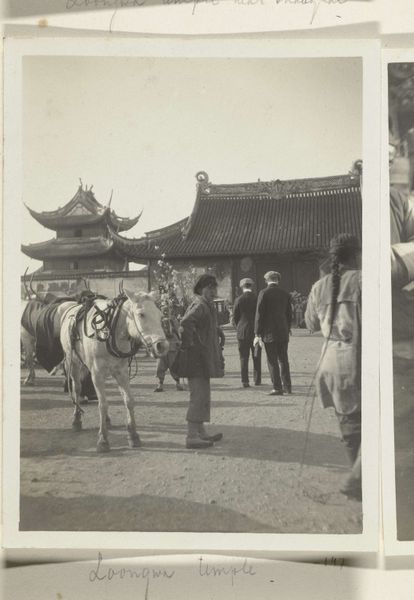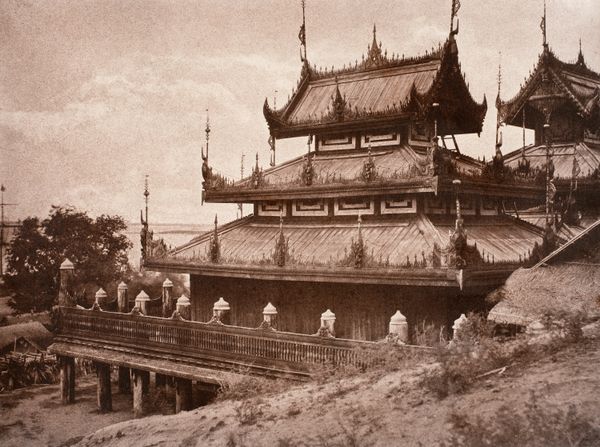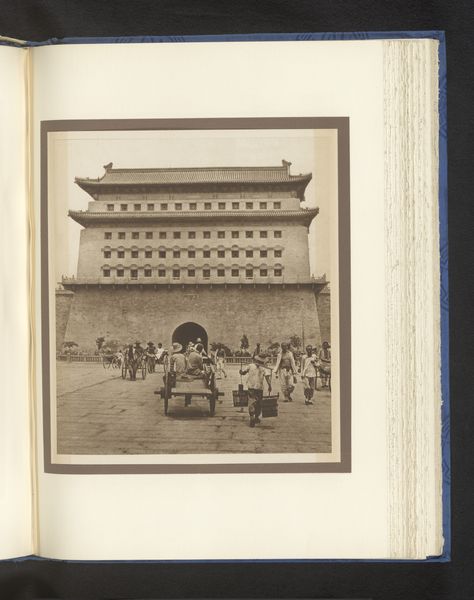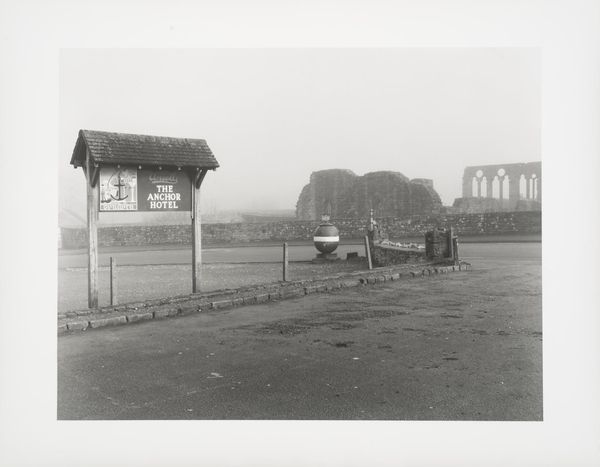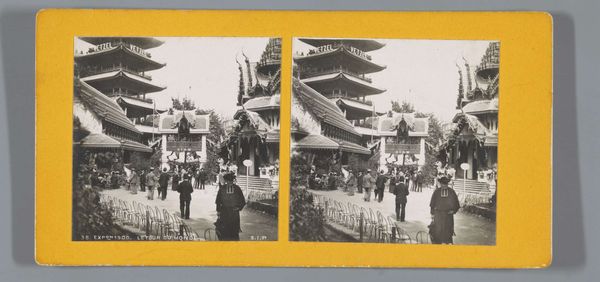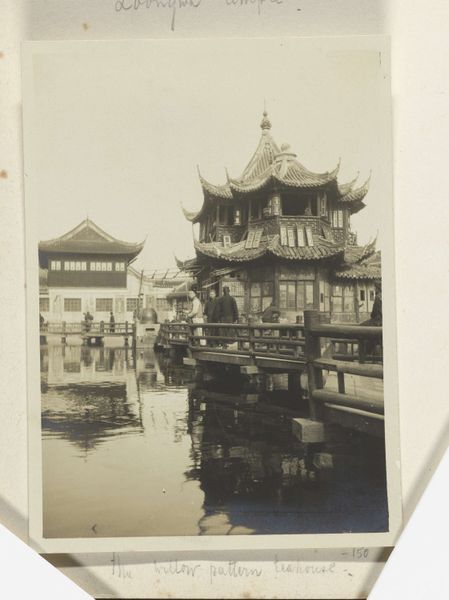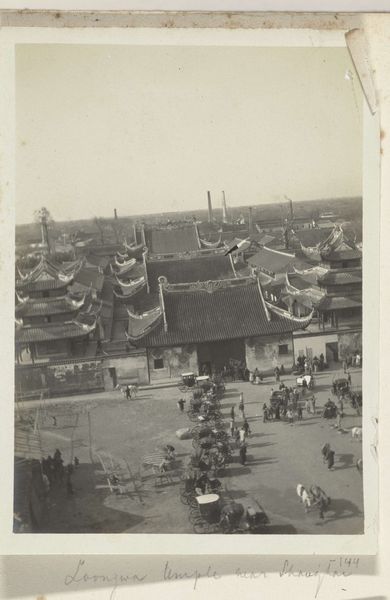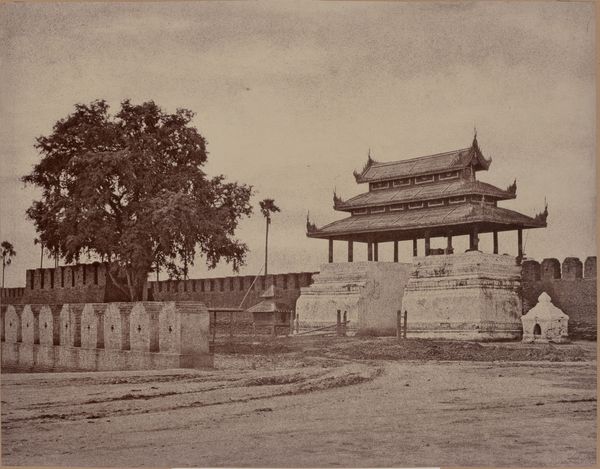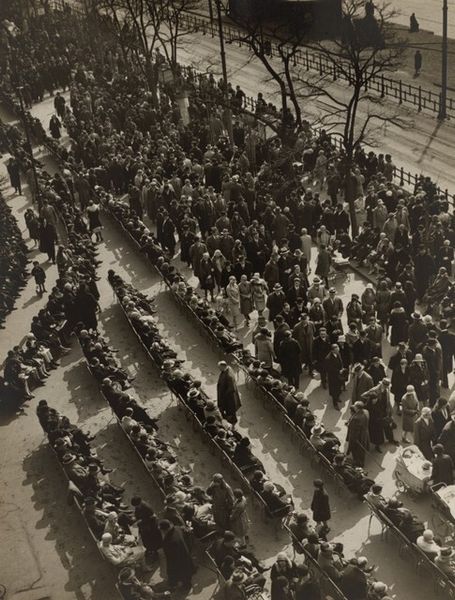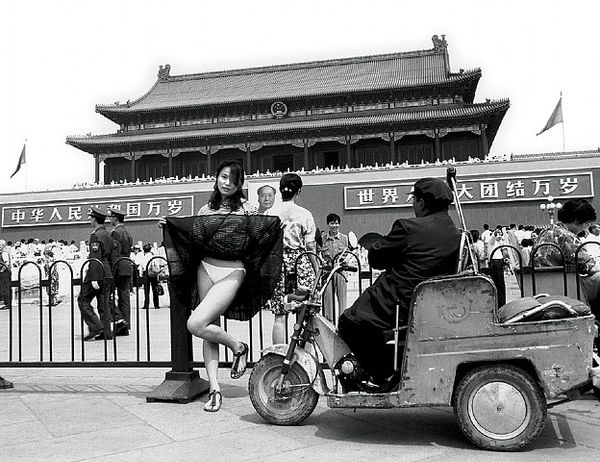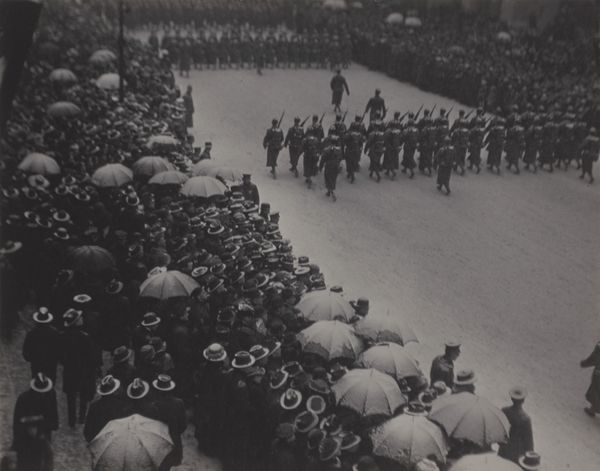
"New Army Day Parade," Forbidden City, Beijing, China 1948
0:00
0:00
print, photography, gelatin-silver-print
# print
#
street shot
#
landscape
#
street-photography
#
photography
#
photojournalism
#
gelatin-silver-print
#
street photography
#
cityscape
#
modernism
#
realism
Dimensions: image: 16.5 × 24 cm (6 1/2 × 9 7/16 in.)
Copyright: National Gallery of Art: CC0 1.0
Editor: Here we have Henri Cartier-Bresson's "New Army Day Parade, Forbidden City, Beijing, China" from 1948, a gelatin silver print. The repetition of figures marching in formation against the immense architecture is striking. What's your take on this work? Curator: I’m particularly interested in the print itself, a gelatin silver print, a process reliant on mass production and standardization. It underscores how photography, unlike painting or sculpture, democratizes image making. Think about the labor involved - from the miners extracting the silver, to the factory workers producing the photographic paper, to the photographer documenting a moment. Editor: So, you're focusing less on the event depicted, and more on how the image came to be? Curator: Exactly! Consider also, the historical moment: 1948. The civil war in China. This "New Army" isn't just a visual element; they represent a shifting socio-political landscape. Bresson, by capturing this parade, participates in a global network of news and information dissemination that depends on technology and distribution systems. What power dynamic do you think it suggests? Editor: Hmm, so the photograph itself becomes a commodity, contributing to a larger narrative? I guess I initially saw the photograph as purely documentary, but now I’m understanding how intertwined it is with material processes and power structures. Curator: Precisely. It highlights the social and economic implications embedded in art production. The act of photographing isn’t neutral. It's labor, consumption, and representation, all at once. What’s changed about your perspective of documentary photography? Editor: Now I'm starting to question how the very materials and methods used to create the image shape the narrative being presented. It’s making me think differently about every photograph I encounter. Curator: Exactly. Considering art through its means of production gives us a far richer understanding of its place in the world.
Comments
No comments
Be the first to comment and join the conversation on the ultimate creative platform.
